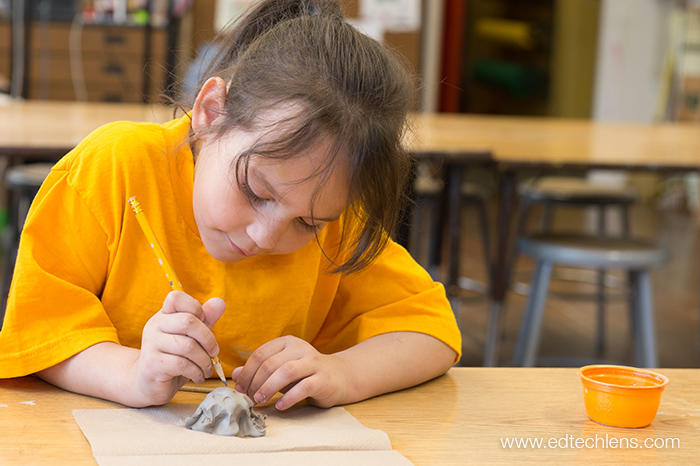
Transitioning from STEM to STEAM in K-5
“By the time students are in middle school and high school, they’ve already decided they’re not good at science,” says Shay Coleman, a retired school teacher and Executive Director of Global Learning, which provides quality professional development to teachers. An advocate for STEAM (where the ‘A’ stands for “art”), she says incorporating art into STEM for grade school students offers an easier path into the abstractions of science and math for young students.
At a time when American employers lack skilled workers for tech jobs and many experts decry the decline of our nation’s scientific prowess, some educators say that the arts – encompassing language arts, social studies, physical arts, music and fine arts – could help draw more students to STEM.
Arts and Sciences More Alike Than Different
Creativity is at the heart of scientific exploration, and Coleman says that in her experience grade school students are “little creators” and natural investigators. “The hands-on aspect of inquiry is typical of both art and science – and kids respond to it so well,” she says
She points out that art brings all four subjects of STEM together. For example, “by taking the time to draw what they see, students are forced to observe more carefully and in more detail. When students begin to visually represent technology, they’re flexing the same muscles they may use in the future to create industrial design,” she says.
She points out that art brings all four subjects of STEM together. For example, “by taking the time to draw what they see, students are forced to observe more carefully and in more detail. When students begin to visually represent technology, they’re flexing the same muscles they may use in the future to create industrial design,” she says.
Incorporating Art into the Sciences
Coleman’s organization helps teachers create opportunities for elementary students to search deeply and engage their imaginations and problem-solving skills through STEAM curricula. Projects like experimentation with water filtration or building a wind turbine from orange juice containers lay a foundation for deeper inquiry: How can art inspire this design? What have we seen in nature that could help us design a way to catch the wind for our turbine?
“The language arts are incorporated through journaling about the project,” she says. “We use comp books and students can also create virtual, interactive journals to design a prototype – a model of what they’ll build – and attach videos, text, and scans of their drawings. Sequencing is important for young students, so I ask them to describe the process steps in their journals too. They answer questions like, ‘What are you noticing?’, ‘What are you wondering?’. And ‘What if…?’ is a useful refrain too. It helps them think deeper. ‘What if we try something completely different? What if we bend our turbine fins?”
Science Lapbooks as Artistic Creations
She points out that art is just another way to express what we see, but without the ability to convey their point of view, scientists’ findings may be moot. If we want our kids to grow up to innovate in the sciences, they’ll need more than scientific expertise. They’ll need the creative-thinking and problem-solving skills that come from striving for some form of artistic expression.
For teachers who would like to learn more about integrating the arts and sciences in the grade school classroom, Global Learning offers a STEAM Summer Teacher Institute for K-5 teachers every July. Click here to learn more.
About Shay Coleman: Coleman is Executive Director of Global Learning, Inc., an education non-profit offering teacher professional development for over 40 years. She is also an elementary school teacher of math, science and social studies in Chatham, New Jersey, with additional certification as a Curriculum Supervisor. She has taught Problem-Based Strategies for teaching Elementary Mathematics as an adjunct professor at Fairleigh Dickinson University, for the Graduate Education Program. Shay has a Masters in Teacher Education from Fairleigh Dickinson University and an Undergraduate Degree in the Sciences from the University of Vermont in Burlington, Vermont. She is a member of NJSTA (New Jersey Science Teachers Association), NCTM (National Council of Teachers of Mathematics), and the NJEA (New Jersey Education Association).

